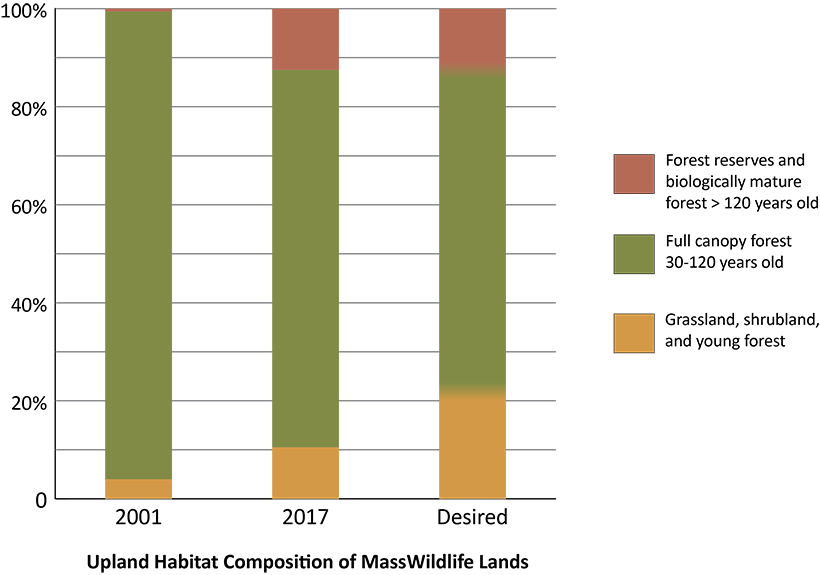MassWildlife works to conserve a diversity of wildlife and plants identified in the State Wildlife Action Plan through restoration and management on both public and private lands across Massachusetts. Carbon accounting for climate change impacts of all habitat management on state wildlife lands is tracked in the carbon budget for MassWildlife lands.
Using information from scientific literature, from biological monitoring, and from private conservation organizations, MassWildlife established statewide habitat goals in 1996. These goals provide diverse habitats for both game and non-game species, and also provide a full range of recreational opportunities across open grasslands, dense shrublands, vibrant young forest, and dedicated forest reserves (see below).
Many types of wildlife rely on grassland, shrubland, and young forest habitats – all of which are declining across Massachusetts today. The MassWildlife Habitat Program works to expand these habitat types on both public and private lands.
Public lands include Wildlife Management Areas and Wildlife Conservation Easements, as well as portions of state forestlands, town forestlands, and state watershed lands. Private lands include Land Trust properties and individual ownerships.

